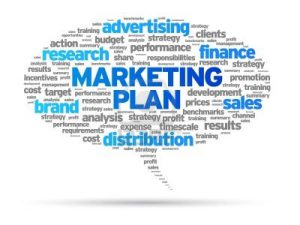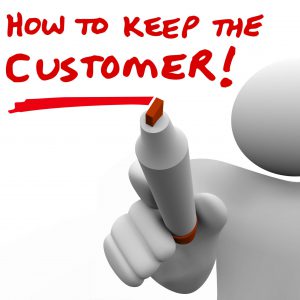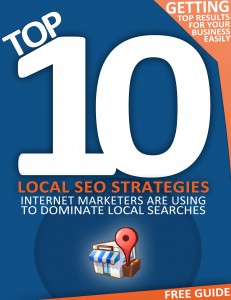When planning your marketing budget for 2015, consider…
Personalization
Not to be confused with, “Hey there, [First Name],” personalization is about the experience of the user, not the user themselves.
Marketers everywhere have been liberally slapping personalization code everywhere the light touches and assume they’re providing context to the user.
They’re not.
 Automation software like HubSpot enables marketers to display unique content to segments of the audience that would find it most helpful. For instance, if you’re a software company, I can customize IMPACT’s homepage to display different content and value propositions customized for that specific vertical.
Automation software like HubSpot enables marketers to display unique content to segments of the audience that would find it most helpful. For instance, if you’re a software company, I can customize IMPACT’s homepage to display different content and value propositions customized for that specific vertical.
Visiting our website from Twitter? You can experience something completely different than someone who visits our domain directly.
Accessing the site on mobile? You may see less content to make scrolling and the overall experience much cleaner.
That’s context.
It’s also somewhat expected. People want a personalized experience. They want to see more articles similar to the ones they’ve already read and found interesting. This is why you see many blogs display a feed of similar posts below the one you’ve already read.
The key? I’m seeing completely different ones than you are.
What to budget for: For full functionality, there’s really no substitute than a comprehensive marketing automation software. We love it. But finding the right fit for your company is entirely up to you. This much is clear: if you don’t yet have the ability to customize the web experience for your audience, it’s time to invest.
Ephemeral marketing
This is more about behavior more than anything, but what it does is provide us with some intelligence on how people are evolving these behaviors.
Ephemerality has been effective as a marketing tactic long before applications like Snapchat, but the popularity – and controversy – of the “now you see it, now you don’t” style of the app has simply brought it to the forefront for marketers.
This works for a couple of reasons:
- It appeals to people’s increasing desire to have their information/data kept private. Social platforms like Ello are sprouting up with the sole value prop being, “you keep your data. We’ll keep you private.”
- Exclusivity breeds interest. People like to be included in something they know not everyone is seeing, with the added bonus being that it won’t last forever.
This doesn’t mean everyone should go jump on Snapchat or allocate resources to maintaining a presence on it. It’s not going to be right for everyone. Consumer goods? Sure. B2B service? It still remains to be seen.
What to budget for: Ephemeral marketing is seen most often in emails. Deals expire. Discount codes are unique or expire. If you don’t already, you’ll want to start using an email marketing client that’s more robust to handle more segmentation and list building. Then it’s all about promoting your best offers to the right people with a hint of exclusivity at times.
On-demand content
I had a client tell me a few weeks back, “I don’t have time for webinars, man. You know how hard it is to block our an hour of my time every day to watch?”
I do.
Others know it, too. This sort of empathy is why you’re seeing many marketers adopt more of an on-demand content strategy, producing more podcasts and videos that their audience can subscribe to and watch anytime.
It’s still lead generating, it’s simply more respectful of the user’s time.
What to budget for: While you certainly don’t need a professional studio to produce great content, it’s certainly worth looking at a video host like Wistia in order to get more analytics for your video marketing strategy. For podcasts, it could be as simple as recording yourself using something like Skype – or even your iPhone – just make sure you have the audio equipment necessary to record great audio.
Optimizing the user experience
People often talk about user experience as if it’s something that is achievable. It’s never fully achievable as it’s always evolving. And that’s great. But do you know enough about how people are behaving on your website to stay with these evolutions?
Gut instinct will only bring you so far for achieving great user experience. In fact, it’s only useful for identifying a control. But it’s the variants that are most interesting, as you can see what works better for your audience.
Does your CTA button get more clicks in the header? Or halfway down the page?
Should your button text say “Register Today”? Or “Show Me How to Get More Customers”?
That sexy paralax scrolling effect on your landing pages – would a more clean, simply page achieve similar, or greater, conversions?
What to budget for: Check out CrazyEgg, a visual-reporting software that tracks where your users are clicking and scrolling. There are others like it in the space, but CrazyEgg was the first of its kind, and for us, has been extremely helpful in ensuring we’re always aligned with the behaviors our audience is displaying.
 Going all-Inbound
Going all-Inbound
The most important budgeting decision you’ll make this year may not involve added dollars, but rather a reallocation of them.
According to HubSpot’s 2014 State of Inbound Marketing, over 40% of respondents in both B2B in B2C verticals increased their inbound budgets this year.
The reason? 50% of respondents credit past success with inbound marketing strategies for the increase.
What’s up with these numbers? Well, inbound marketing happens to align perfectly with evolving buying behavior.
These evolutions happens because tecnology enables them too, not some idealistic transformation in people’s minds. We have access to more information – at all times – than ever before. Reviews, instructionals, data – it’s all there. On screens located on ours desks, pockets, and even our wrists.
Unsurpirsingly it’s not the paid banner ads consumers are looking for. Those are pitches, not information.
Like HubSpot CEO Brian Halligan says, “Inbound marketing is about the size of your brain, not the size of your wallet.”
What to budget for: If you’re not producing and distributing the type of information your audience needs, those channels that currently deliver visitors to you will eventually dry up if they haven’t already. It’s becoming increasingly hard to go out and fish for the attention you need. You have to earn it. Are you still allocating budget for things like PPC, direct mail, and print and TV advertising? What would happen if you reallocated some of it toward attracting your audience rather than fishing for them?
We actually have a very detailed plan for you. Customized. Free. Step-by-Step.
Check it out here. http://new.wonmarketing.com/local_internet_marketing_solutions/#fcmp

Click to Schedule a FREE 1-1 Strategy Session with us. During this Strategy Session we’ll take the time to do the research on your firm to show you your unique SEO plan. Click Here to Learn More about our Strategy Sessions.
For more FREE articles and videos like this, simply give me your name and email below and I’ll send this TOP 10 Local SEO Secrets and How to Profit from the Internet.
We promise, I’ll respect your email inbox and never share or sell your information.

Leave A Comment